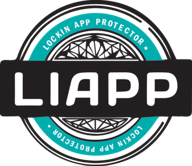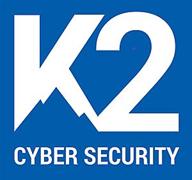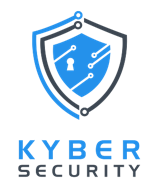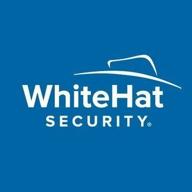Application Security
Ensuring Robust Application Security: Best Practices and Techniques
Introduction
In today's interconnected digital landscape, application security is of paramount importance to safeguard sensitive data, protect user privacy, and prevent cyber attacks. Secure coding techniques for application development, effective vulnerability mitigation strategies, and adherence to best practices for securing web applications are vital components in establishing a robust security posture. This article explores these crucial aspects in detail, highlighting the importance of proactive measures to counter potential threats.
css
Secure Coding Techniques for Application Development
Secure coding forms the foundation of robust application security. By implementing secure coding techniques during the development process, developers can significantly reduce the risk of vulnerabilities and potential exploitation. Some essential practices include input validation, proper error handling, secure authentication and authorization mechanisms, and secure data storage. Regular code reviews, utilizing secure coding standards and frameworks, and employing secure development methodologies such as the "secure by design" principle contribute to creating more resilient applications.
Application Security Vulnerabilities and Mitigation Strategies
Despite the best coding practices, applications can still be susceptible to various security vulnerabilities. Understanding these vulnerabilities is crucial to develop effective mitigation strategies. Common vulnerabilities include cross-site scripting (XSS), SQL injection, cross-site request forgery (CSRF), and insecure direct object references (IDOR). Mitigation strategies involve employing input sanitization and validation, implementing secure coding patterns, using prepared statements or parameterized queries, and employing strict access controls. Regular security assessments, penetration testing, and staying updated with the latest security patches are also crucial for mitigating vulnerabilities.
Best Practices for Securing Web Applications
Web applications are often targeted by malicious actors, making it imperative to follow industry best practices to enhance their security posture. Secure web application practices include implementing strong authentication mechanisms, utilizing encryption for sensitive data transmission, implementing secure session management, and adhering to the principle of least privilege for user access control. Applying secure configuration settings, keeping software dependencies up to date, and implementing a robust incident response plan are additional measures that contribute to the overall security of web applications.
Conclusion
Application security requires a comprehensive approach that encompasses secure coding techniques, vulnerability mitigation strategies, and adherence to best practices for securing web applications. By adopting these proactive measures, organizations can minimize the risk of breaches, protect their reputation, and ensure the confidentiality, integrity, and availability of their applications and data. Staying informed about emerging threats, regularly updating security measures, and fostering a security-conscious culture are ongoing efforts necessary to counter the evolving threat landscape and maintain a robust application security posture.


4 Review
Define what activity is considered normal for your containerized applications & be notified when an application deviates.


3 Review
Jscrambler provides enterprise-grade security solutions that secure the client-side of web and hybrid mobile applications. Jscrambler's Code Integrity provides the most resilient JavaScript protection solution for Web-based apps today. The client-side technology, which includes polymorphic obfuscation, code locks, and self-defending capabilities…
Read more about this company

3 Review
Contrast Protect is a runtime application self-protection solution that uses deep security instrumentation to automatically weave real-time threat visibility & attack protection into every app.


3 Review
Tala's AI-driven, agent-less solution protects PC and Mobile Users against XSS, cryptojacking, click-jacking, ad injection, web injection and other malicious attacks.


3 Review
Needle.sh simplifies security for developers. The Needle.sh SDK secures web applications with just 2 lines of code.


3 Review
Just One-Click, We’ll Take Care of Security So You Can Focus More on Everything Else. LIAPP provides security features that mobile apps require to gain the power to protect themselves: Source code protection, Anti-tampering, Anti-debugging, Virtual machine detection, Hacking tool detection, Memory protection, Library protection, Game engine protection…
Read more about this company

3 Review
Sqreen is an application security platform that provides extensive visibility and reaction capabilities to the threats targeting both legacy and modern cloud applications. Trusted by security teams, loved by developers, Sqreen improves the security standards of the world's leading organizations. Founded by former security experts at Apple, Sqreen…
Read more about this company
3 Review
Utilize existing CI/CD tools to automatically generate secured environments with the first in-memory run-time workload and data protection


3 Review
K2 Security Platform from K2 Cyber Security delivers signature-less runtime web application and application workload protection with minimal false alerts to protect against sophisticated attacks including OWASP Top 10 and memory-based attacks. K2 Security Platform protects against zero-day attacks aimed at application vulnerabilities in real-time and…
Read more about this company

3 Review
IMperva provides runtime application self protection (RASP) and application security-as-a-service.


3 Review
KyberSecurity protection is a suite of advanced multilayered cybersecurity technologies. The security engines operate interconnected leveraging an outstanding protection against the most sophisticated attacks.


3 Review
Appdome, the mobile app economy’s one-stop-shop for mobile app defense, is on a mission to protect every mobile app in the world and the people who use mobile apps in their lives and at work. Appdome provides the mobile industry’s only mobile application Cyber Defense Automation platform, powered by a patented Artificial-Intelligence based coding engine…
Read more about this company

3 Review
IMMUNIO is a Runtime Application Self-Protection (RASP) solution that supports multiple frameworks such as Scala, PHP, Python, Ruby, Node.JS, and Java. After a 2 minute installation, IMMUNIO is equipped to detect and block threats to web applications as they occur in realtime - mitigating account takeover attacks and attempts to exploit vulnerable code…
Read more about this company
3 Review
Nuweba rearchitected serverless from the kernel up to create a high-performing FaaS platform, which provides advanced application security and deep visibility



3 Review
Dotfuscator is an application hardening and obfuscation tool for all .NET platforms. including the latest versions of Xamarin and .NET Core. PreEmptive is a trusted global leader of protection tools for Desktop, Mobile, Cloud, and Internet of Things (IoT) applications. We help organizations make their applications more resistant and resilient to hacking…
Read more about this company

3 Review
Hdiv RASP enables applications to protect themselves during runtime. By building protection in during development, Hdiv RASP protects applications from the inside, keeping them secure wherever they go.


3 Review
Validian Protect is a computer security software that manages all crucial security functions, including authentication, encryption and addressing.


3 Review
WhiteHat Sentinel Dynamic is a software-as-a-service platform for dynamic application security testing (DAST).


2 Review
Templarbit Shield secures the software that runs your business. It stops malicious traffic, helps you keep sensitive data from getting exposed and will discover anomalies that could be early indicators of a breach.
- Secure coding techniques for application development involve implementing best practices to minimize vulnerabilities and potential exploitation. These techniques include input validation, proper error handling, secure authentication and authorization mechanisms, secure data storage, regular code reviews, utilization of secure coding standards and frameworks, and employing secure development methodologies.
- Application security vulnerabilities can be mitigated through various strategies. These include input sanitization and validation, secure coding patterns, the use of prepared statements or parameterized queries, strict access controls, regular security assessments and penetration testing, staying updated with security patches, and employing robust incident response plans.
- Securing web applications involves following best practices to enhance their overall security. These practices include implementing strong authentication mechanisms, utilizing encryption for sensitive data transmission, secure session management, adhering to the principle of least privilege for user access control, applying secure configuration settings, keeping software dependencies up to date, and having a robust incident response plan.
- Application security is crucial to safeguard sensitive data, protect user privacy, and prevent cyber attacks. By ensuring robust application security, organizations can minimize the risk of breaches, protect their reputation, and ensure the confidentiality, integrity, and availability of their applications and data.

